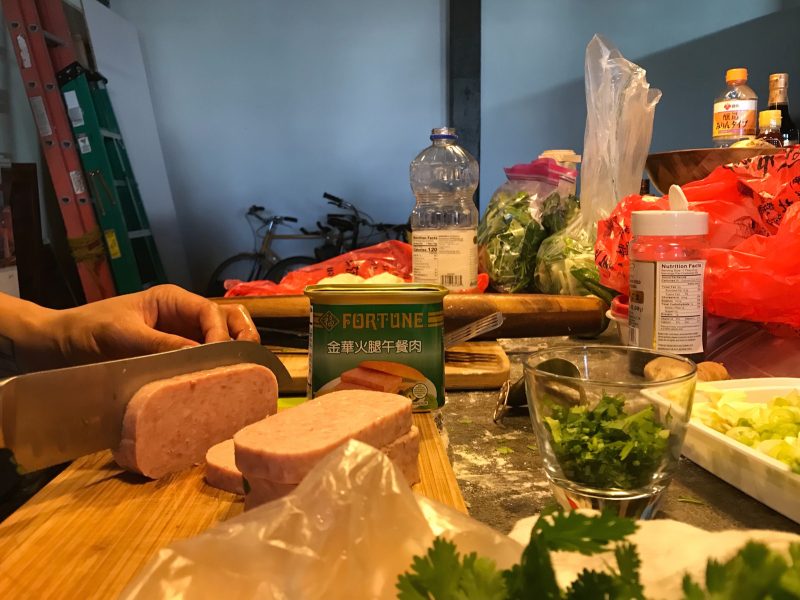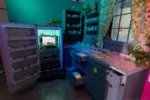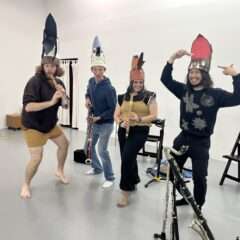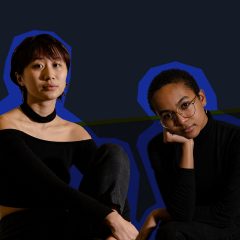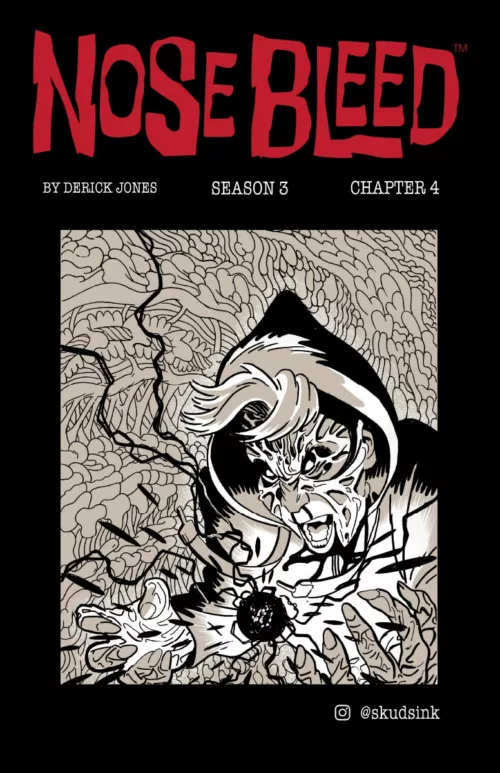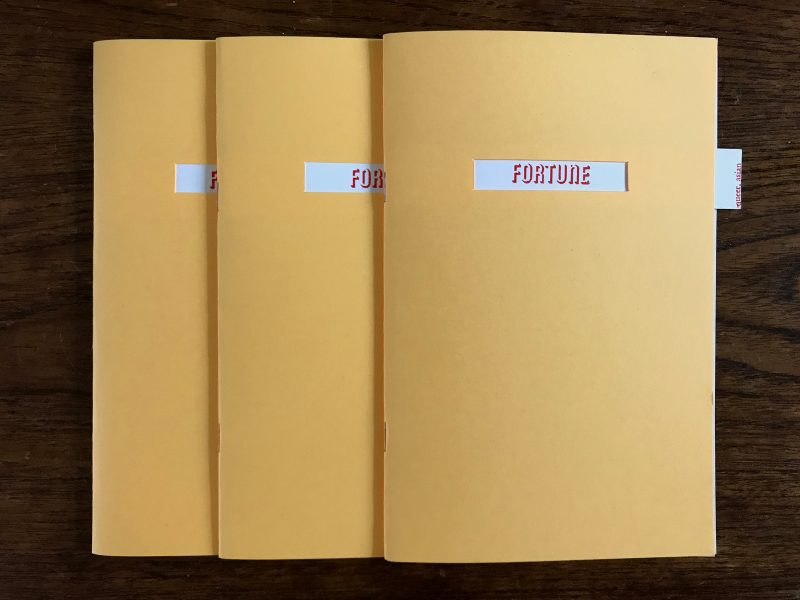
FORTUNE zine is a text-and-image publication founded and curated by Connie Yu, Andrienne Palchick, and Heidi Ratanavanich. It is a submission-based monthly publication for members of the Asian/-American diaspora, with a focus on work by femme and queer-identified writers and artists. Yu, Palchick and Ratanavanich will release twelve issues in all—the first was released in February 2019 to celebrate the Lunar New Year. In tandem with the publication, the trio organizes events incorporating performance, visual work, and food to mark the release of each installment. With their most recent issue, they also presented an exhibition at High Tide Gallery.
If you are interested in and would like to submit to FORTUNE, you can contact them through printingfortunes@gmail.com; you can find further information on Instagram via @manyfortunes. If you would like to help support and donate to FORTUNE, you can Venmo @printingfortunes. You can view FORTUNE’s show at High Tide until the end of June.
Sarah Kim: Could you all introduce yourselves?
Connie Yu: I’m Connie (they/them), and I’m a writer based in Philadelphia. I’m also interested in performance, educational, and curatorial work that resists institutional forms of knowledge-transmission.
Andrienne Palchick: I am Andrienne Palchick, I also go by Andra. I mostly work in printmaking, but generally create work that deals in the making of multiples. I’m interested in different forms of narrative documentation. I use she/her pronouns
Heidi Ratanavanich: I’m Heidi Ratanavanich. I use she/they pronouns. I build sculptures and functional objects mainly with wood and food objects. I really enjoy making things with other people, so collaborating is really important to my practice.
SK: You mention collaborating, Heidi, which brings me to FORTUNE zine and A/Public, which was the inspiration for the current publication. Could you elaborate on the origins of these two things and how each of you became involved?
AP: Maybe Connie could start with that because they were involved.
CY: That sounds good; feel free to amend that as we go around the circle. One could say that a beginning iteration of this project was a show called A/Public, which happened at the Kelly Writers House in January of 2018. It was a group show of 15 queer, femme and Asian identified artists in Philly and New York. It opened with a night of performances and a library of held and kept objects, including zines that were offered by some of the participating artists. From this show grew other iterations of community-building and loose gathering. I met Heidi and Andra through this process.
HR: I don’t remember this but how did you find everyone?
CY: It was mostly a network of loose affiliation or kinship networks I guess? I had co-curated that show with Adrien Hall and Monika Uchiyama who were both at the time grad students at Penn. We reached out to Joan Oh first, and Adrien and Monika had known Cole Lu who is a New York based artist. We reached out to Eva [Wǒ], Eva recommended both of you as artists, and it went on like this for a little bit. So the curating process was really a total collaborative effort.
HR: Kind of like an unfolding, because now I’m remembering that I think I got an email from Joan or Eva asking about folks.
AP: One thing that really stood out to me from that show was Connie, Adrien, and Monika had organized a dialogue for participants before the opening. I think it was about an hour long; we got to do only a round of everybody introducing themselves and got to talk a little bit. We were just getting into it before the opening, but I think a common sentiment was, a lot of people were like, “How many times in my life have I been in a room solely of other queer Asian folx?” There was kind of a consensus of people really wanting to maintain a connection and keep within this community. The other part of it was there was an accompanying zine to the show. That laid the basis of FORTUNE, in creating some sort of ephemera to document this coming together.
HR: I saw the artist Ren Hang. I was looking at this person’s work and they had done this photo book that was 12 months–January, February, March April–and I was like, “Wow, that’s a great idea!” Just to do a series that is contained with a start and end. I felt inspired and reached out to Connie and Andrienne with this idea.
SK: For FORTUNE, you began the first issue with a theme and you’re continuing that trend. Why did you decide to embark on a zine instead of organizing more events focused on visual art or performance? Furthermore, how do you choose the theme for each issue?
HR: I think that’s still an ongoing conversation. It so happened that as the idea hatched we were coming upon the Lunar New Year and we thought that would be a good entry. The theme folded into the timeline.
AP: We wanted to have some sort of marker or celebration for it, and also it was right around the time of the one year anniversary of A/Public. It seemed like good things to bring together: the Lunar New Year, this embarking on a one-year intention. At the release, we took suggestions for future themes and someone submitted the theme, ‘broken correspondence.’ We broadened it to be ‘correspondence’ so that could apply to both the ways that we communicate with each other, sometimes across time and distance, and the ways that we relate or correspond or identify with things.
CY: The idea of carrying on a theme and having a suggestion-based way to go about it felt exciting, that these ideas could be fulfilling and generative and generated by people who are committed to this idea. We’ve been using themes as prompts and not hard constraints on content, but because there will be multiple issues, that’s one way to differentiate among them as the design is constant.
SK: Do you try to choose themes that feel especially pertinent to the Asian-American diaspora experience? For example, for communication, it’s a stereotype that at least for East-Asian people, there’s a lot of passiveness, silence, and repression. In future issues, do you want to embark on ideas that feel relevant in opening up these more taboo or sensitive topics?
CY: That’s why it’s important that it comes from not just us. We can’t presume to embody the Asian diaspora. I feel lucky that there’s so many interested parties here who have different experiences from ours, who can name something that feels important enough to have an issue about it, you know?
AP: I would definitely say just even in the [issues] we’ve done so far, in thinking through them, all of us have been thinking about how we identify with those topics as queer Asian people and how they could be pertinent topics for other people who would want to submit.
SK: In contrast to the mutable themes, how did you decide on the design of the zine, which is fixed? For example, you always use red and black for the color scheme. What is visual intentionality in the format?
AP: Having red be very present was definitely a big one, with the first issue being with the Lunar New Year, and red being a color that’s associated with luck in a lot of Asian cultures.
HR: FORTUNE, the title, is based on the fortune cookie as this generalized Asian object in Asian-American culture.
CY: I also have to interject and say it’s not based on Fortune Magazine.
HR: Thank you–(laugh). We’re excited about this idea of the fortune cookie as an object, the aesthetic of it being this really beautiful golden yellow color and having the red text in the fortune itself. So we were really modeling the zine as a fortune cookie.
This is going to be a series of zines, and we talked about, “Will it change, will it look the same,’ and decided that it would be interesting that all of them look the same and the content will change. The idea of grabbing a fortune cookie and–
AP: They open it and see what’s inside.
HR: Yeah; the continuity of that felt really strong. We want to have these live eventually in a box or some sort of sculptural object.
SK: You mentioned that in the original A/Public, a lot of people were remarking on the absence of this kind of community in Philadelphia. Do you feel like there’s been other Asian-American and queer Asian-American organizations that you’ve drawn inspiration from in this process?
CY: You mean locally in Philadelphia and outside [of it]? It does seem like there’s a gap here. Maybe I just wasn’t looking in the right places, but it did seem very special to name this kind of grouping and to see it happen and happen again. But I think that there are a lot of radical Asian-centered, queer-centered collectives. We were just talking about the Yellow Jackets Collective in New York. Press Press, based in Baltimore, aren’t Asian-specific but they do really cool work.
AP: I’m not from the West Coast, but knowing people who are from there and live there, it is a much more present scene to have a lot of queer Asian-centered organizing there. I’m specifically thinking of the Bay and LA. A good friend of mine for a while was producing a zine called Moon Root with a collective there, and I was always really excited to have this tangible thing even if I didn’t know all the people who were involved or whose work was in there.
HR: I’m thinking of Hotpot. It’s this group here that is very casual and lowkey. They organize these small gatherings I’ve been to, here and there, and I’ve met some really great people from that group. But there is, like Connie was saying, a gap or a lack of that FORTUNE is trying to…
SK: Fill that gap.
HR: Yeah.
This is a two part interview. Stay tuned for part two (coming soon) to learn more about FORTUNE zine!
